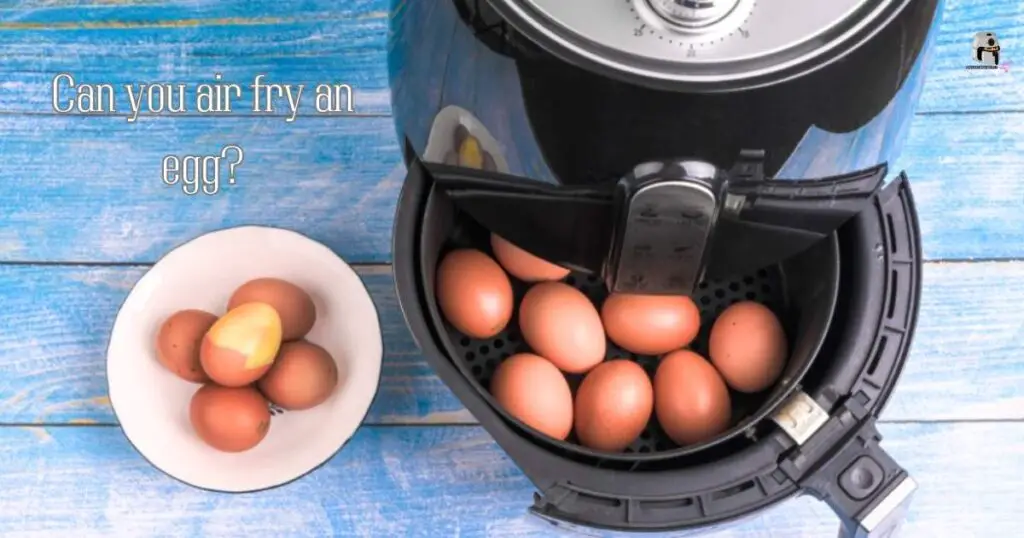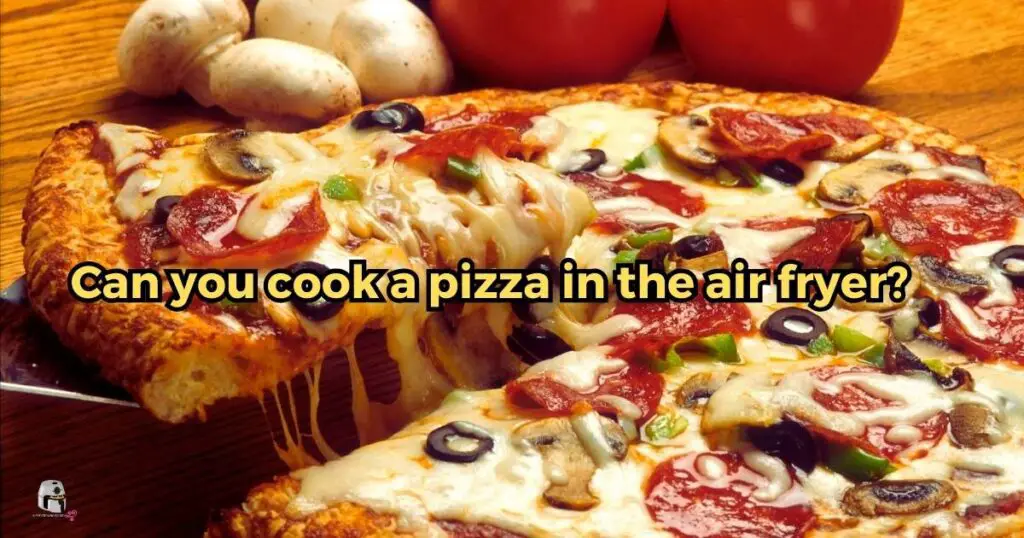Table Of Contents
- How to Reheat Pizza in Airfryer- Step-by-step Instructions
- Why Use the Air Fryer to Reheat Pizza?
- What Happens if You Don’t Reheat Pizza Properly?
- How Do You Know if Pizza Has Gone Bad?
- Common Mistakes to Avoid When Reheating Pizza in the Air Fryer
- Expert Tips for Reheating Pizza in the Air Fryer
- FAQs
- Final Verdict
For reheating pizza in your air fryer, follow these simple steps: Lay your pizza slices flat in the middle of the air fryer basket. Set the temperature to 375°F and the timer to two minutes, then start the air fryer on the bake function. After one minute, check the pizza to avoid burning.
Adjust the time accordingly, and keep an eye on it for the best results. In just a few minutes, you’ll have hot, crispy pizza ready to enjoy.

How to Reheat Pizza in Airfryer- Step-by-step Instructions
Reheating pizza in an air fryer is a convenient way to enjoy your leftover slices with that perfect crispy crust and gooey cheese. Here’s a step-by-step guide for the best results:
Ingredients
- Leftover pizza slices
- A basket-style air fryer
- Optional: Parchment paper, aluminum foil, or silicone liners for easy cleanup.
Process
- Step 1: Preheat the air fryer: Begin by turning on your air fryer and setting the temperature to around 350°F (175°C). Let it preheat for 2-3 minutes. Preheating ensures even cooking and helps to retain the pizza’s crispiness.
- Step 2: Arrange the Slices: Lay out the pizza slices in a single layer inside the air fryer basket. Ensure that the slices do not overlap. If you have a smaller air fryer, you should reheat the pizza in batches.
- Step 3: Optional Step: For ease of cleaning and to prevent any cheese from sticking to the basket, you can place a piece of parchment paper, aluminum foil, or a silicone liner under the slices. This step is optional but can make the cleanup process smoother.
- Step 4: Air Fry: Close the air fryer basket and set the timer for 3-4 minutes. After 3 minutes, check your pizza’s progress. You should be looking for the crust to regain its crispiness and the cheese to become oozy and bubbling again. Be cautious not to overcook.
- Step 5: Remove and Serve: Carefully use tongs or a spatula to take out your freshly crisped-up pizza. Allow it to cool briefly to avoid burning your mouth, and then savor the delight of your hot, melty, and mouthwatering pizza slices.
Read More:
Why Use the Air Fryer to Reheat Pizza?
Discover why using an air fryer to reheat pizza has become the preferred method for pizza lovers. Here’s an in-depth look at the compelling reasons behind this popular choice:
Perfect Pizza Restoration
When reheating pizza in an air fryer, you can expect an exquisite result – a slice with a crispy, golden-brown crust and cheese that’s tantalizingly gooey, mirroring its just-out-of-the-oven state. This eliminates the frustrating issues of sogginess or dryness often encountered with other reheating methods.
Quick and Reliable
One of the most compelling advantages is speed. Air fryers efficiently and consistently reheat pizza in just a few minutes, ensuring you can indulge in your favorite slice without a long wait.
Compatibility with All Air Fryers
This method works flawlessly with both basket-style and oven-style air fryers, making it an option for all kitchen setups. Whether you have a compact or large air fryer, the technique is adaptable.
Versatility Across Pizza Styles
Regardless of your pizza style preference – whether it’s thin crust, thick crust, deep-dish, frozen, homemade, or any other variety – the air fryer excels at rejuvenating it to perfection. There’s no need to discriminate; every pizza type benefits from this reheating method.
Energy Efficient
Reheating in an air fryer is more energy-efficient than firing up an entire oven, helping you save on electricity bills. It also maintains a comfortable kitchen environment without adding unnecessary heat.
Crispness Without Grease
Unlike microwaves, which often result in a limp and greasy crust, air frying ensures your pizza maintains its delightful crispness. You get that satisfying contrast of textures – a crispy exterior and a tender interior.
No More Dry Pizza
Traditional ovens tend to dry out pizza slices during reheating, but the air fryer keeps them moist and delicious. You won’t have to endure the disappointment of biting into a dry, cardboard-like crust.
Swift Preheating
The beauty of using an air fryer is that you skip the tedious preheating step. You can place your pizza slice in the air fryer, set the timer, and it’s ready to enjoy within minutes.
Efficient and Speedy
Reheating pizza in an air fryer is notably faster than using an oven. The hot air circulates around the pizza slice, ensuring an even and rapid reheating process. The time saved makes it an ideal choice for a quick meal.
Hands-Off Approach
While conventional ovens may require you to closely monitor the reheating process to prevent burning, air fryers operate with minimal supervision. It’s nearly automated, allowing you to multitask or relax while your pizza reheats.
Comprehensive Pizza Compatibility
Whether you have leftover takeout pizza, homemade pizza, deep-dish, frozen pizza, thin crust, naan pizza, or any other style, the air fryer is an all-inclusive solution. It takes the hassle out of selecting the right reheating method for different pizza types, making it versatile and convenient for all pizza enthusiasts.
What Happens if You Don’t Reheat Pizza Properly?
Improperly reheating pizza can lead to a less-than-ideal culinary experience. Here’s what might happen if you don’t reheat pizza properly:
- One of the most common issues is a soggy pizza crust. Using the wrong method or temperature can result in moisture buildup, leaving you with a limp and unappetizing crust. A soggy crust can make your pizza less enjoyable and even messy to eat.
- Reheating pizza improperly may lead to unevenly heated slices. Some parts of the pizza can be scorching hot, while others remain cold or lukewarm. This inconsistency affects the overall taste and texture.
- If not reheated correctly, cheese can either become rubbery and overcooked or not melt properly. Overheating cheese can lead to a less appealing texture, making the pizza less enjoyable.
- Delicate pizza toppings like fresh herbs, cold sauces, or salad greens can become wilted, soggy, or lose their texture if subjected to high heat. This can affect the overall presentation and taste of your pizza.
- On the flip side, excessive reheating can lead to the pizza becoming dry and unpalatable. Overcooked slices might lack the delightful juiciness and tenderness found in perfectly reheated pizza.
- Improper reheating can alter the flavor profile of your pizza. Overcooking or using the wrong method can lead to burnt or off-flavors, diminishing the overall pizza experience.
- If pizza isn’t reheated to a safe temperature, you might run the risk of consuming undercooked or lukewarm portions, potentially increasing the risk of foodborne illnesses.
- Finally, reheating pizza improperly can result in a less-than-satisfying meal, potentially leading to food waste if you decide not to finish it.
How Do You Know if Pizza Has Gone Bad?
Determining if pizza has gone bad involves examining several key factors. Here are some indicators that your pizza may have spoiled:
- Odor Inspection
Begin by smelling the pizza. If you detect an unusual, rancid, or sour odor that is different from the usual aroma of pizza, it’s a strong indicator of spoilage. The smell often comes from bacteria or molds that have developed.
- Visual Examination
Inspect the pizza visually. Look for any visible signs of spoilage, particularly mold growth. If you see fuzzy, green, blue, or white patches of mold on the crust, toppings, or elsewhere, it’s unsafe to eat. Additionally, check for any discoloration in the ingredients or noticeable changes in texture.
- Texture Changes
Fresh pizza should have a desirable texture, with a crispy crust and tender toppings. If the pizza appears excessively greasy, slimy, mushy, or soggy, it has likely deteriorated. Such textural changes indicate spoilage or loss of quality.
- Taste Assessment
Taste a small portion of the pizza. If it has an unusual, sour, or off-putting taste, it suggests spoilage. Pay attention to any bitterness or unpleasant flavors that are not typical of pizza.
- Mold Growth
Mold is a definite sign of spoilage and can pose health risks if consumed. Even if you spot mold on one section of the pizza, it’s best to discard the entire pizza because the spores can have spread invisibly.
- Packaging Condition
Inspect the packaging or container in which the pizza is stored. If the packaging is damaged, unsealed, or compromised, contaminants might have entered, increasing the likelihood of spoilage.
- Storage Duration
Consider how long the pizza has been stored. Pizza left at room temperature for more than two hours, particularly in warm weather, becomes a breeding ground for bacteria. Refrigerated pizza should ideally be consumed within three to four days to maintain quality.
- Allergenic or Dietary Reactions
If you have food allergies or dietary restrictions, ensure the pizza does not contain ingredients that you need to avoid. Eating pizza with allergenic components can lead to adverse reactions.
- Health Symptoms
Monitor for any health symptoms after consuming pizza. If you experience nausea, vomiting, diarrhea, stomach cramps, or other digestive issues shortly after eating, it’s a strong indication that the pizza was spoiled, and medical attention may be necessary.
Common Mistakes to Avoid When Reheating Pizza in the Air Fryer
Reheating pizza in an air fryer can yield fantastic results, but there are several common mistakes you should steer clear of for the perfect slice. Let’s delve into these frequent mix-ups and introduce a few additional points to ensure your reheated pizza is nothing short of delightful:
Skipping the Preheat
One of the most common mistakes is neglecting to preheat your air fryer. Placing cold pizza slices in a cold air fryer can lead to uneven heating. To ensure even and rapid reheating, always preheat your air fryer for 2-3 minutes before adding your pizza.
Overcrowding the Basket
Attempting to cram too many pizza slices into the air fryer basket is a recipe for disaster. Overcrowding limits air circulation, resulting in soggy and unevenly reheated pizza. Allow ample space around each slice for optimal crispiness.
Using the Wrong Temperature
Selecting the right temperature is critical. Reheating at too high a temperature can scorch your pizza, while too low a temperature may leave it undercooked and soggy. While 350°F is a solid starting point, remember that different pizza styles (thin vs. thick crust) may require adjustments. Tailor your settings to your specific pizza type for optimal results.
Ignoring Pizza Thickness
Be mindful of the thickness of your pizza when determining reheating times. Thin-crust pizzas usually need only about 3 minutes, while deep-dish slices may require up to 7 minutes. It’s essential to adjust both the temperature and timing according to the specific pizza style you’re reheating.
Not Checking for Doneness
Relying solely on the timer can lead to overcooking. Pizza reheating can vary depending on the air fryer model, pizza thickness, and personal preferences. Make it a habit to check on your pizza regularly to avoid overcooking and ensure it’s reheated to your liking.
Using the Wrong Accessories
While optional, using parchment paper, aluminum foil, or air fryer liners can help prevent cheese or toppings from sticking to the basket. Avoiding these items, particularly with gooey or extra-cheesy pizzas, can lead to a messy situation and a loss of delicious toppings.
Uneven Slices
When arranging your pizza in the basket, ensure even spacing between slices. This practice ensures consistent reheating and prevents portions from becoming overcooked or undercooked.
Reheating with Toppings
If you have leftover pizza with delicate or fresh toppings like arugula, basil, or cold sauce, consider adding these after reheating to preserve their freshness and texture.
Expert Tips for Reheating Pizza in the Air Fryer
For the best results when reheating pizza in your air fryer, consider these expert tips:
- To make cleanup a breeze, consider using a disposable perforated parchment liner or a reusable silicone mat in your air fryer basket. Alternatively, you can use aluminum foil, but be sure to create small holes in it for proper air circulation, especially if you want a crispy bottom.
- Arrange the pizza slices in a single layer within the basket, ensuring they are not overlapping or stacked. This promotes even heating and prevents sticking.
- Avoid adding extra oil to the pizza; the cheese in the toppings usually contains enough oil to prevent sticking and enhance flavor.
- Keep an eye on the pizza as it reheats, as air fryer models may vary in heating times. If you notice the pizza browning too quickly, lower the temperature by 25 degrees to avoid overcooking.
- It’s advisable to reheat only 1-2 slices at a time to ensure proper air circulation. Overcrowding can lead to sticking and uneven reheating. For small air fryers, limit it to 2-3 slices at most.
- If reheating deep-dish or thick-crust pizza, consider adding an extra minute or two to the cooking time.
- You can place the pizza slices directly on the air fryer basket or tray; there’s no need for aluminum foil. If you do use foil, cut holes in it for proper air circulation. Perforated parchment paper is also a suitable alternative.
FAQs
How Long to Reheat Pizza in Air Fryer?
Reheating pizza in the air fryer is a swift process, typically taking just 3-4 minutes. To achieve a crispy texture with gooey, melted cheese, set your preheated air fryer to 350°F. If you skip preheating, it might require slightly more time for optimal results.
Can You Eat 3 Day Old Pizza Not Refrigerated?
Eating pizza that has remained at room temperature or within the danger zone of 40°F to 140°F for more than two hours is not safe. This advice is supported by Meredith Carothers, a food safety specialist from the USDA’s Food Safety and Inspection Service, due to the risk of food spoilage.
How Many Times Can You Reheat Pizza?
From a food safety perspective, pizza can be safely reheated multiple times as long as it’s reheated at the correct temperature and duration. However, the Food Standards Agency (FSA) recommends reheating food only once for best results and safety. It’s advisable to follow this guidance whenever possible.
Is Leftover Pizza Better Cold or Reheated?
Whether leftover pizza is better cold or reheated depends on personal taste. Some prefer cold pizza for its unique texture and flavors developed during refrigeration, including a chewier crust and altered taste profiles compared to freshly heated pizza.
Final Verdict
Reheating pizza in an air fryer is a game-changer. It delivers pizza that’s as crispy and gooey as if it just came out of the oven. It’s quick, hassle-free, and works for all types of pizza. Plus, it won’t heat your entire kitchen. The air fryer ensures you avoid the dreaded microwave sogginess and oven dryness. So, say goodbye to subpar reheated pizza.
In just a few minutes, your day-old pizza will taste like it’s fresh out of the pizzeria. Give it a try and elevate your pizza reheating game to a whole new level!
You May Also Like to Read More:







